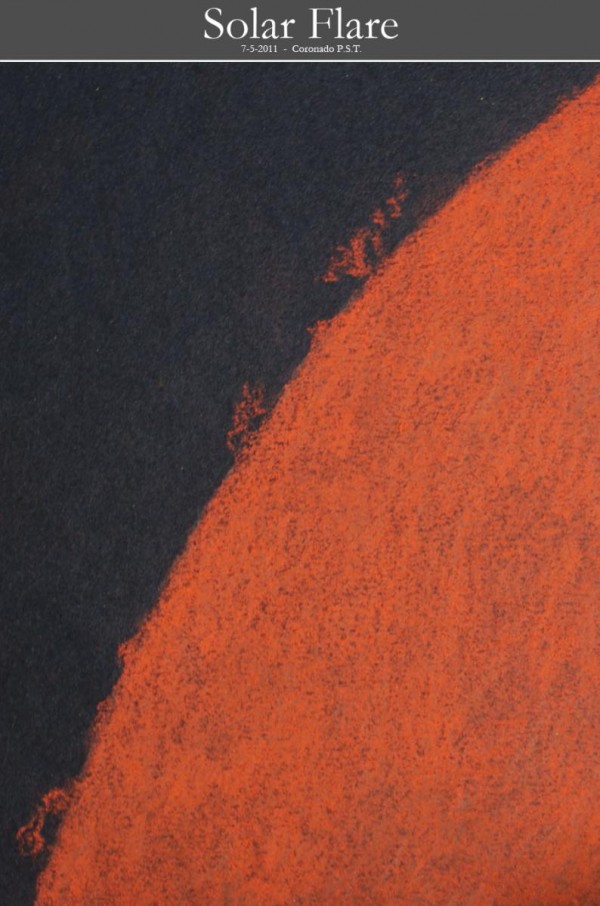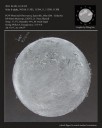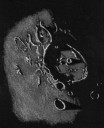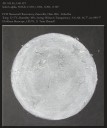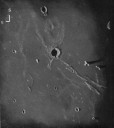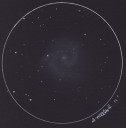


2011 05 05, 1230 UT – 1515 UT
Solar h-alpha, NOAAs 11203, 11204, 11205, 11207 and prominences
PCW Memorial Observatory, Zanesville, Ohio USA – Erika Rix, www.pcwobservatory.com
Temp: 22.5°C, Humidity 38%
Seeing: Wilson 4, Transparency: 3/6
DS 60mm Maxscope, LXD75, 21-7mm Zhumell, ETX70 AT w/tilt plate and white light glass filter.
H-alpha sketch created scopeside with black Strathmore Artagain paper, white Conte’ crayon and pencil, Derwent charcoal pencil, black oil pencil. White light sketch created on photocopy paper with 0.5mm mechanical pencil and #2 pencil.
The Sun was a little too low in the observatory for me to stay inside at the beginning of the session, so I pulled all my gear onto the grass. It was probably the best move anyway, since it warmed up quite a bit during the session.
I started off with the Maxscope for an overall view. The prominence at the western limb caught my eye initially, but it was the prominence on the eastern limb that really put on a show. It was nearly three times taller than the other and had the faintest wisps of filament reaching out connecting the brightest three areas of that prominence section.
The h-alpha full disk was filled with filaments and plage within the band of active regions. I’ve flipped the views of both the white light and h-alpha full disk sketches to match the standard view (at least a little more so as I didn’t rotate it completely) for comparisons with SOHO views. In white light, there were three distinct areas of faculae, one each on the western and eastern limbs and one around AR 11207. I couldn’t detect 1205 in white light and although the Sun had rotated slightly, I’m fairly sure 1207 is indeed that designation in my sketch and not 1205. Prenumbrae were noted around the preceding spots in 1204 and around the entirety of 1203.




